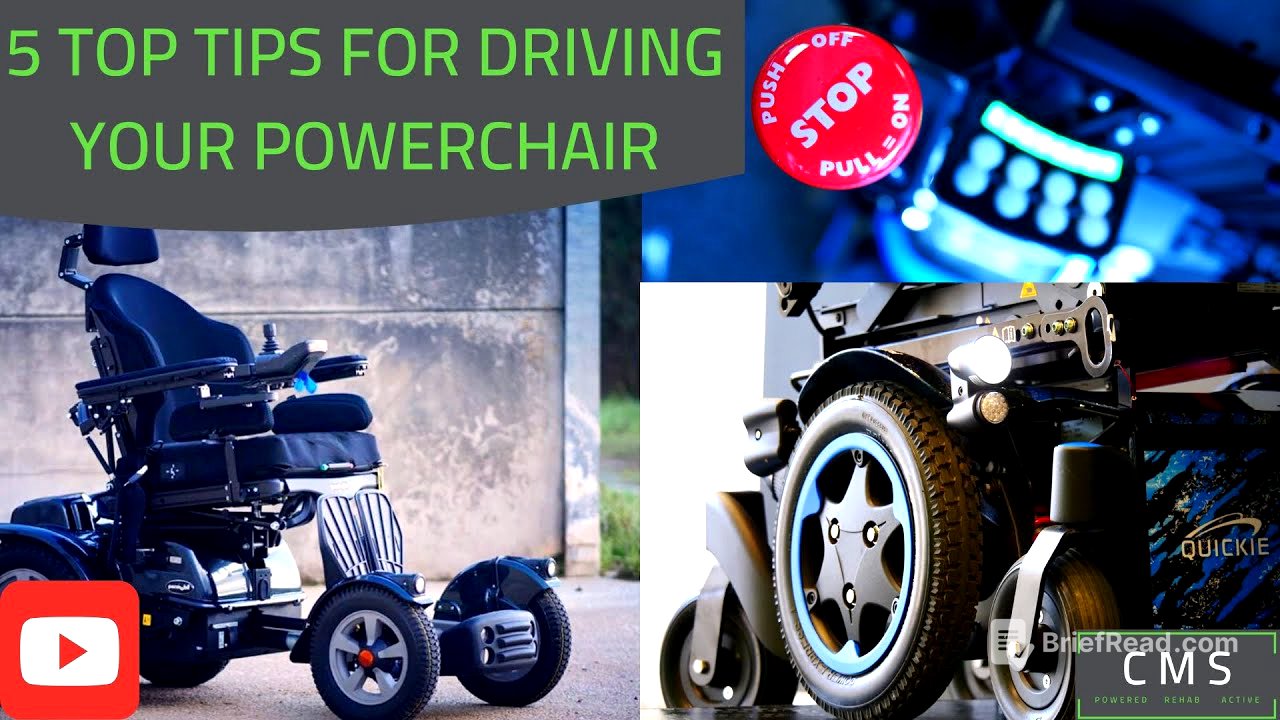TLDR;
This video provides five key tips for power chair users, aiming to improve their control, safety, and overall experience. The tips cover joystick handling, controller positioning, using tilt functions on inclines, avoiding overcompensation in tight spaces, and understanding the turning characteristics of different drive base types (mid-wheel, front-wheel, and rear-wheel).
- Proper joystick handling improves control.
- Correct controller positioning enhances posture and chair control.
- Using tilt functions on inclines increases comfort and safety.
- Avoiding overcompensation in tight spaces prevents erratic movements.
- Understanding drive base characteristics optimizes turning maneuvers.
Tip 1: Hold the Controller at the Base of the Joystick [0:29]
Holding the joystick at its base provides more stability and control over the power chair. Holding it at the top can make movements exaggerated and reduce control. By holding the joystick at the base, users can achieve steadier and more precise movements.
Tip 2: Have Your Controller in the Right Position [1:00]
Proper controller positioning is crucial for comfort, posture, and chair control. Ensure the controller is neither too far nor too close, and that armrests are at the correct height. Adjustments to the armrests and controller should be made to avoid reaching or scrunching up. Consulting with an engineer or seating assessor can help optimize the controller position for long-term comfort and control.
Tip 3: Use Your Tilt When Going Down an Incline [2:03]
When navigating inclines such as ramps, drop curbs, or steep hills, utilize the power tilt function to maintain a level position. This allows the power chair to manage the gradient, enhancing comfort, safety, and control. By adjusting the tilt, users can align themselves with the slope, making the chair's motor work more efficiently.
Tip 4: Don't Over Compensate Your Inputs [2:31]
Avoid exaggerated movements on the joystick, especially in tight spaces like doorways or narrow paths. Overcompensation often occurs due to panic or heightened awareness, leading to erratic chair movements. Instead, use small, controlled increments to maintain stability and prevent the chair from jumping around. If unsure, stop the chair and reassess the situation before proceeding.
Tip 5: Understand Your Drive Base and How It Turns [3:25]
Understanding the characteristics of your power chair's drive base (rear-wheel, mid-wheel, or front-wheel) is essential for effective maneuvering. Rear-wheel drive chairs require wider turns, similar to a car. Mid-wheel drive chairs have a tighter turning radius, so staying central is important to avoid clashes. Front-wheel drive chairs have a "tail" to consider, requiring users to point into corners to ensure the back of the chair clears obstacles. Practice turning maneuvers in a large space to understand how your chair operates in different situations.









